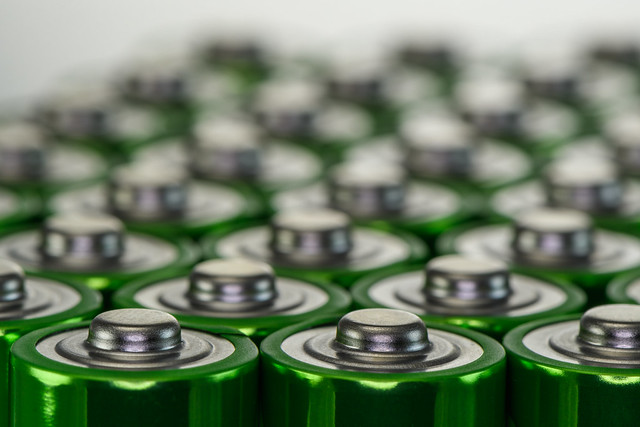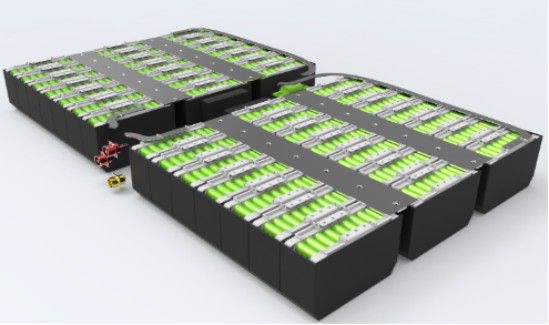Why do lithium-ion batteries die?
Sep 24, 2019 Pageview:2187
Lithium-ion batteries are used in all type of electric devices including smartphones, laptop, and many other things. These batteries are used for their function and long-lasting ability. The lithium battery is heat sensitive and becomes hot as it comes to direct contact with the sun. The lithium-ion gets charge rapidly and sometimes blast because of excess heat. The only solution to keep the lithium battery is the protector that will keep it safe and protect the battery from external risks. This chargeable battery can last and efficiently work for a long time if you use it under the strict usage instruction by the company. Now, we are going to discuss a few questions that are come in the mind while using lithium batteries. Let's discuss them.
Why do lithium-ion batteries die·
If you use a cell phone for over a year or two, you realize that the lithium-particle batteries start to decrease after some time and decline to hold a charge as they used to when they were new, yet the reason of its decline was unknown but know we have the answer.
A gathering of scientists at Stanford University, the University of Bath, and MIT utilized the SLAC National Accelerator Lab's offices at Stanford to display the development of ionic lithium through batteries, graphing its course.
William C. Chueh, an associate teacher at Stanford who performs investigate at SLAC depicts batteries as,
· in a general sense
· an adversely charged terminal
· an emphatically charged one
· a separator in the middle of the two
This makes a territory of high vitality and a zone of low vitality that lithium particles move between. The lithium is put away in a strong state, however, travels through a fluid into the strong supply.
Lithium is anisotropic·
Lithium was believed to be anisotropic in these states, which means it inclines how it travels through the battery. Be that as it may, for reasons unknown, that is not so much the case. Rather, it plots a muddled course, prompting regions where it makes a problem area in the battery. This harms the battery, decreasing its capacity stockpiling limit, given how warmth is a battery's most exceedingly awful adversary.
"We utilized extremely incredible X-beams from a quickening agent, and we're utilizing these X-beams to investigate these individual nanoparticles," Chueh says.
One of the issues could be that our comprehension of the developments of the lithium mixes utilized in batteries is fairly inadequately seen, particularly because taking a gander at the particles at Nanoscale hasn't been conceivable up to this point.
As Chueh puts it,
"Past models don't generally clarify how the fluid collaborates with the strong. Sort of like in space, we consider how the molecule carries on in a vacuum. Be that as it may, a battery doesn't work in a vacuum—it works in a fluid."
However, there is uplifting news—by seeing the majority of the vehicle pathways of lithium, the group can help fabricate a more astute battery.
"Our decision from the paper is that to have great lithium transport, at that point you have to till this vehicle pathway—not turn it on however turn it off,"
Cheuh says. This incorporates planning particular vehicle channels, extra protecting on batteries, or a battery added a substance that would avert against consumption or the development of problem areas.
This, thusly, could help increment the effectiveness and life span of batteries that go in crossbreed and electric vehicles, and battery-powered batteries intended to store sun oriented vitality when the sun isn't out. These sorts of changes may take over 10 years to appear in batteries—yet the group is confident that their exploration is adjusted into battery producing. What's more, past this current, there's still bounty to learn.
How do you solve the problem of battery degradation·
With each charge cycle, your cell battery corrupts or decline marginally. A charge cycle is a full release and charge of the battery, from 0% to 100%. Halfway charges consider a small amount of a cycle. Charging your telephone from half to 100%, for instance, would be a large portion of a charge cycle, repeat it twice. Some telephone proprietors utilize more than a full charge cycle a day, others utilize less. It relies upon the amount you utilize your telephone and what you do with it.
Battery producers state that after around 400 cycles a telephone battery's ability will debase by 20%. It might have the option to store 80% of the vitality it did initially and will keep on corrupting with extra charge cycles. The truth, in any case, is that telephone batteries most likely debase quicker than that. One online website guarantees a few telephones arrive at that 20% debasement point after just 100 charge cycles. Also, just, all things considered, the telephone battery doesn't quit debasing after 400 cycles. That 400 cycles/20% figure is to give you a thought of the pace of rot.
Draw limitation between hot and cold polls:
Maintain a strategic distance from boundaries of warmth and cold. If your telephone gets extremely hot or cold, it can strain the battery and abbreviate its life expectancy. Leaving it in your vehicle would most likely be the most noticeably terrible guilty party if it's hot and bright outside or beneath solidifying in winter.
Stay away from quick charging:
Charging your cell rapidly focuses on the battery. Except if you truly need it, abstain from utilizing quick charging.
The more slowly you change your battery the better, so if it’s all the same to you moderate charging medium-term; put it all on the line. Charging your telephone from your PC just as certain savvy attachments can restrict the voltage going into your telephone, easing back its charge rate. Some outer battery packs may slow the speed of charging, however, I don't know about that.
How to improve the situation of the lithium-ion battery:
The most advantageous charge for a lithium-particle battery is by all accounts about half. If you are going to store your telephone for an all-inclusive period, charge it to half before turning it off and putting away it. This is simpler on the battery than charging it to 100% or giving it a chance to deplete to 0% before capacity.
The battery, incidentally, keeps on corrupting and release if the telephone is killed and not being utilized by any means. This age of batteries was intended to be utilized. If you consider it, turn the telephone on like clockwork and top the battery up to half.
Expanding battery life:
Battery life expectancy is additionally influenced by battery life, to what extent your telephone endures on a solitary charge. Improving battery life broadens the life expectancy of the battery by hindering those charge cycles.
Bottom line:
Lithium-ion batteries are best in use but as time passes, they start to decline. Though the reason was unknown now, we got the solution to it.
- Prev Article: Discharge Characteristics of Lithium Ion Batteries
- Next Article: Do Lithium Ion Batteries Have A Shelf Life?
Leave Message
Hottest Categories
-
Hottest Industry News
-
Latest Industry News











